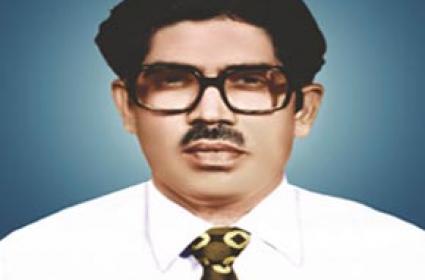Remembering Dr E Bhagiratha Rao Of DLRL

By M Somasekhar
It was sometime in the mid 1980’s, as a young Journalist with the news agency PTI that I got a chance to visit the Defence Electronics Research Laboratory (DERL), in Kanchanbagh, Hyderabad. Those days, in the name of high security, media was hardly allowed into the Defence labs.
The Director of DLRL was Dr E Bhagiratha Rao. After all the checks, I was ushered into his chambers. For the next couple of hours, it was a fascinating tour for me of the facilities in defence electronics and some of the futuristic projects that were being pursued in electronic warfare to key missile technologies.
With neither Google nor published literature available on defence research and activities in India, it was very interesting to get an idea of what was going on. One thing that got etched in my memory was, Dr Bhagiratha Rao explaining to me about future scenarios of Autonomous Vehicles guided by technology and Driverless Vehicles. It sounded more science fiction to me then.
On March 22, when I heard that Dr Bhagiratha Rao passed away at the ripe age of 90, many things that he was dabbling into with his teams at the DLRL came flashing. All of us know of the Google’s ‘Driverless Cars’ now and the strides that strategic electronics has taken globally.
However, India continues to be struggling with electronics. It’s imports of electronic products and components etc runs into billions of dollars, next only to petroleum products import. Similarly, in defence technology too the country continues to be challenged in strategic and key electronics in its security related projects.
The DLRL in Hyderabad was established in 1961 to bridge the gap and develop indigenous technologies and import substitute key components to support national security efforts, especially in communications and radar systems. Hyderabad, was emerging as a defence hub with the DRDL, DMRL already established.
Dr Bhagiratha Rao was the second Director of the Lab, succeeding the conservative, Dr V Narayan Rao, who had a long innings till 1982 and initiated many projects. He came from the Defence Electronics Applications Laboratory (DEAL), Dehradun.
A national lab, DEAL specialised in communications and surveillance technologies for the military. As the first director, Dr Bhagiratha Rao shaped the growth and direction of the research of the Lab for over a decade and brought it into prominence.
A doctorate from the Andhra University, Dr Rao began his career from a special project called the Himalayan Radio Propogation Unit of the Defence Research and Development Organisation ( DRDO), Dehradun in the early 1960’s. It later was upgraded with significant leadership from him and diversification of research work. In 1976, it was renamed as DEAL.
The stint of Rao at the DLRL in Hyderabad was short, 1982-85, but he brought in new energy, set in the modernisation of the the Labs and also launched several futuristic projects, recalls Dr Srihari Rao, a former Director of DLRL and Chief Controller (R&D) of the DRDO.
Dr Bhagiratha Rao was technically strong, forthright, a sharp thinker, a quick decision maker and looked far ahead of time during discussions and project formulations for the Institutes, wherever he worked, he said.
From DLRL, Dr Rao was moved to the fledgling Institute of Armament Technology ( IAT) in Pune by the DRDO. He contributed well during his tenure by expanding the research and teaching activities. The IAT has since got a University status too.
His forthrightness also got him into trouble. During his stewardship at the DLRL, he suspended over 40 staff. This led to an unprecedented strike for a few weeks. The then Director General of the DRDO, Dr V S Arunachalam, who was earlier director of the DMRL, intervened to diffuse the situation. In a way, this incident led to Bhagiratha Rao’s shift to IAT, Pune later.
During the same time, the Integrated Guided Missile Development Programme ( IGMDP) was launched with APJ Abdul Kalam as the Chief. The indigenous development of Missiles-Agni, Prithvi, Nag, Trishul & Akash got key electronics support from DLRL beginning with Dr Rao and continues till date.
Post retirement, Dr Rao was active with the Engineering Staff College of India ( ESCI), Hyderabad, where he helped establish, electronics & IT. He was also associated actively with the MVSR College of Engineering.
More importantly, Dr Rao was the first President of the Institute of Defence Scientists & Technologists (IDST), an organisation of defence scientists in Hyderabad, especially those retired to take up consultancy and capacity building activities to support the defence Institues, Dr N Divakar, another, former DLRL Director and Padmasri awardee.
It’s a not for profit organisation that will promote the utilisation of the services of key professionals in projects on a time bound manner. There are four branches of IDST in Hyderabad, Pune, Bengaluru and New Delhi. The DRDO has been favourable to the concept and encouraging, says Dr Divakar.
Dr Rao, who lost his wife in the early 1990’s, was active in the cultural field too and was closely associated with the literary organisation called Hamsadhwani. He won the VASVIK award for his contributions to electrical and electronics technologies.
The writer is an Independent Journalist, specialising in Science & Business.



















